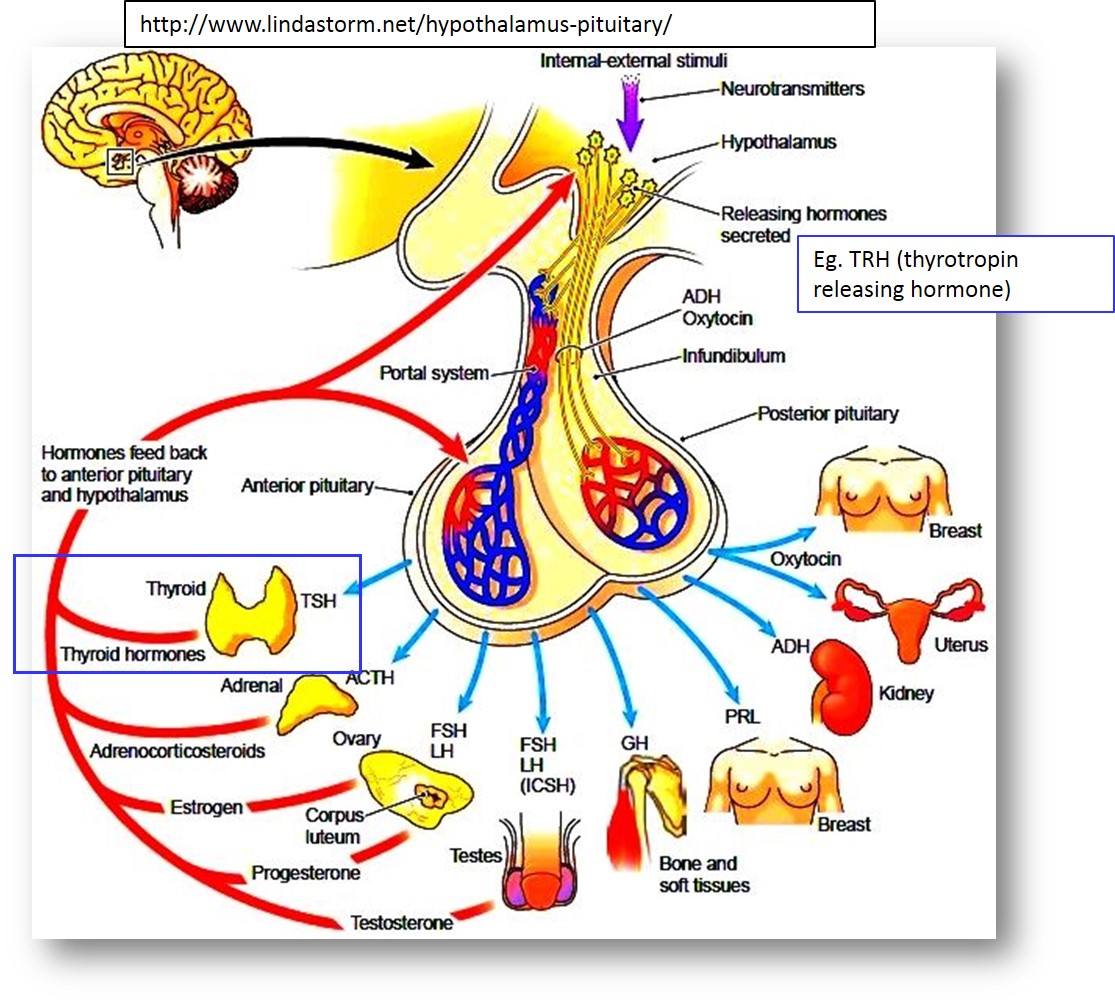Thyroid Gland Function (Click to expand)
The main functions of the thyroid gland are brought about by the TWO main parenchymal cell types:
1. Follicular cells –> Thyroid hormones T3 (tri-iodothyronine) and T4 (tetra-iodothyronine/thyroxine)
- Regulate basal metabolic rate (think about the clinical signs and symptoms of hyper / hypo thyroidism )
- Growth and development, especially of the central nervous system (read about Cretinism – hypothyroidism in infancy or childhood)
- The free (unbound) hormones are the metabolically active forms
- Learn more about T3 and T4 production: http://fitsweb.uchc.edu/student/selectives/Luzietti/Thyroid_hormones.ht
2. Parafollicular C cells –> Calcitonin
- Calcium metabolism – maintains calcium homeostasis (generally, calcitonin opposes the effects of Parathormone)
What regulates T3 and T4 production? (Click to expand)
This mindmap summarises thyroid anatomy and function:
